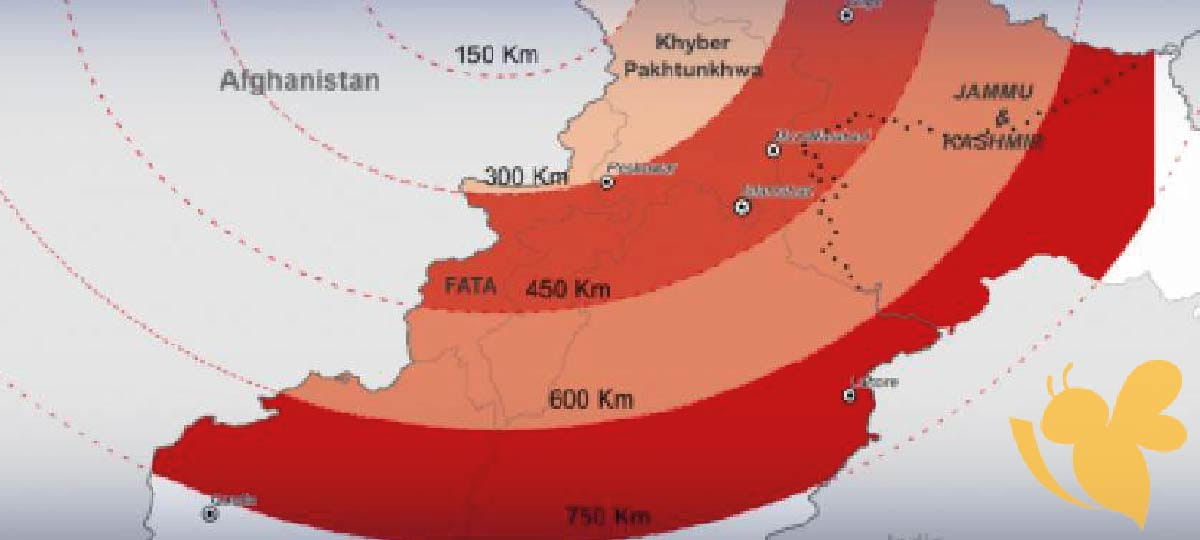Recently, a Dutch scientist has predicted a massive earthquake in Pakistan that has raised concerns among both scientists and the general public. This prediction is based on the study of tectonic plate movements and historical seismic activity in the region. The scientist warns that this earthquake could be devastating, causing widespread destruction and loss of life.
Earthquakes are natural disasters that are difficult to predict with absolute certainty. However, by studying geological data and monitoring seismic activity, scientists can make educated guesses about where and when earthquakes may occur. In this case, the Dutch scientist's prediction is based on sound scientific evidence and should not be taken lightly.
Frank Hoogerbeets, a researcher of the Solar System Geometry Survey (SSGEOS) — an organisation based in The Netherlands — on September 29, claimed that Pakistan would face a catastrophic earthquake.
He claimed to have detected an unusual increase in electric charge fluctuations along the fault lines in Balochistan’s Chaman area.
In February, Mr Hoogerbeets forewarned of a major earthquake in Turkiye and Syria and a 7.8-magnitude quake followed, claiming over 50,000 lives. On January 30, 2023, he predicted heightened geological activity across Pakistan, Afgh anistan, Bangladesh, and China. Subsequently, a 6.8-magnitude earthquake struck Pakistan on February 7, resulting in nine casualties.
According to the US Geological Survey, the prediction of an earthquake necessitates the determination of three key elements: the specific date and time, the location, and the magnitude or intensity of the event.
Separately, Professor Din Muhammad, former dean of Faculty of Environmental Sciences, University of Balochistan acknowledged reports of vibrations along the Chaman fault line due to underground activities, but clarified that the timing of earthquakes originating from this fault line remained uncertain.
Furthermore, he highlighted the presence of Global Positioning System technology in Baloc histan, including Chaman, which has recorded energy build-up and plate movement along the fault line.
In the past, the PMD has consistently dismissed such predictions, citing a lack of scientific basis for earthquake forecasts.
Pakistan is located in a seismically active region due to the convergence of the Indian Plate and the Eurasian Plate, making it vulnerable to earthquakes.
Throughout its history, the country has experienced several significant earthquakes, and the threat of seismic events remains a constant concern.
It is important for authorities in Pakistan to take this warning seriously and take necessary precautions to protect citizens from potential harm. Preparedness measures such as building codes, emergency response plans, and public awareness campaigns can help mitigate the impact of a large earthquake.
In conclusion, while it is impossible to predict earthquakes with 100% accuracy, it is crucial for scientists to continue studying seismic activity and sharing their findings with at-risk communities. By staying informed and taking proactive measures, we can better prepare for natural disasters like earthquakes and minimize their impact on human lives and infrastructure.
Read more
Warren Buffett Analysis: Nebraska grabs top spot in new ranking of state finances
Kylian Mbappé finally joins Real Madrid with $700 contract
Sarah H
Also on site :
- Experimental cholesterol pill reduces heart attack risk with a convenient daily dose
- Vance Boelter apprehended in assassination of DFL House leader Melissa Hortman
- Vance Boelter arrested for the assassination of DFL House leader Melissa Hortman

